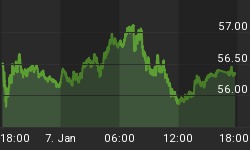Over the past two months, the gaming world has been treated to rounds of verbal sparring between Nvidia and GPU archrival AMD over Nvidia's new Geoforce Partner Program (GPP). But after weeks of accusations of subterfuge and counterattacks, it's all ended as suddenly as it started, with Nvidia pulling the plug on GPP.
The squabbling was triggered by Nvidia's launch of the GPP in March, which it said was designed to ensure gamers gained full transparency into the GPUs they purchased. Nvidia's gaming partners would get promotional support by the company via social media channels.
A week later, however, HardOCP, an online publication covering news, editorials and reviews on computer hardware and software, raised a furor over GPP. According to the magazine, Nvidia was using the new platform to strong-arm its partners to align their brands exclusively with its popular GeForce GPU line, labeling the move “anticompetitive.”
AMD, Nvidia's main GPU rival, followed up with a blog post touting open standards and the freedom of choice.
Nvidia Winning in GPUs...
They say all is well that ends well, and this aptly fits AMD's bill. The GPP saga was turning out to be an unwelcome distraction for a company that should have 100 percent of its focus trained on reviving its CPU segment. Related: What’s Behind The Decline In Bitcoin Volatility?
AMD stock has surged 20 percent since the company reported blowout Q1 2018 earnings on April 2015 thanks to a resurging computing segment.
AMD Stock Year-to-Date Returns

(Click to enlarge)
Source: CNN Money
After enduring a torrid revenue tailspin, AMD has bounced back to strong growth after posting impressive performance by the segment thanks to its new lines of Ryzen, Radeon and Epyc processors.
First-quarter revenue clocked in at $1.65 billion, good for 40-percent Y/Y growth thanks to a robust 95-percent Y/Y growth in the Computing and Graphics segment with revenue of $1.12 billion (68 percent of total revenue).
The company's Enterprise, Embedded and Semi-custom segment where it reports gaming APU/GPU sales performed poorly once again with revenue of $532 million (32 percent of total), a 12-percent Y/Y decline. That's in sharp contrast to a few years back when the gaming segment provided the bulk of AMD's revenue.
The segment appears to be hurting due to the wild popularity of Nintendo's Switch console. From near-oblivion a few years ago, Nintendo's Switch has helped the company give Sony's PS4 and Microsoft's Xbox One a run for their money.
Unfortunately for AMD, Nvidia is the exclusive supplier of Nintendo's APUs for the Switch.
...but AMD is making a comeback in CPUs
But AMD has something even better up its sleeve.
After remaining relatively irrelevant for years, AMD is finally making a comeback in the CPU category and clawing back market share from rival Intel.
The company's new growth story comes from Ryzen desktop processors. The OEM market is considerably bigger than the gaming industry and stakes higher. This is where AMD needs to be focusing most of its attention. Related: The Worst Trades In History
But perhaps even more exciting for AMD investors is the fact that the company's Epyc line has been slowly but surely winning against Intel's Xeon processers in the server processor market.
AMD recorded server processor market share of a measly 1.5 percent in 2017--a far cry from its 25 percent peak share back in 2006. The Bulldoze microarchitecture of 2011 was AMD’s last big push in the CPU space, and that one did not work out too well. But Epyc appears to be a lot more promising, and has helped AMD score a big cloud win with Microsoft's Azure.
More wins like this and AMD stock will be back in play again.
By Alex Kimani for Safehaven.com
More Top Reads From Safehaven.com:

















